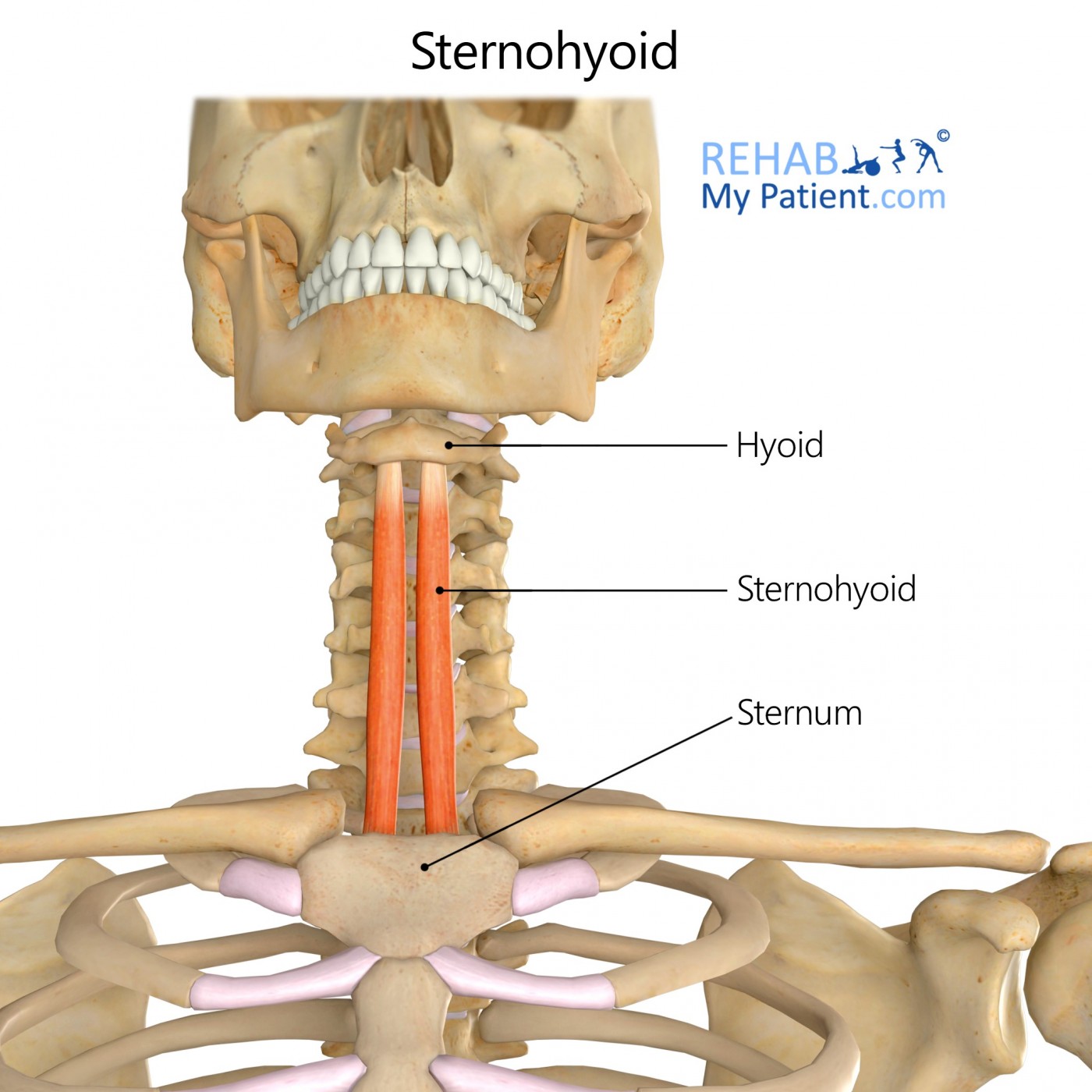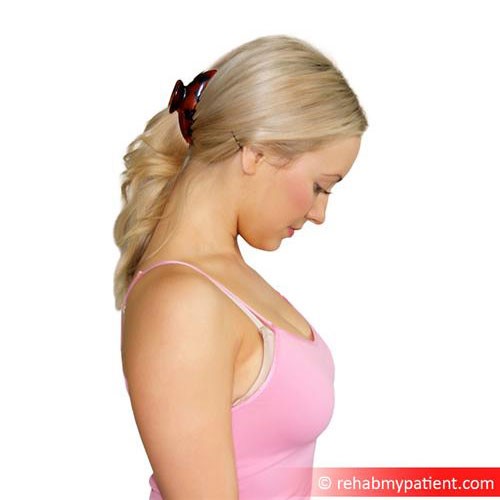
General information
The Sternohyoid is a narrow, thin muscle that attaches the hyoid bone to the sternum, which is one of the paired strap muscles from the infrahyoid muscles that serves to depress the hyoid bone. It is innervated by the ansa cervicalis. The muscle comes from the posterior border of the medial end out of the clavicle, the upper and posterior portions of the manubrium sterni and the posterior sternoclavicular ligament. Passing medially and upward, the muscle is inserted via the short tendinous fibres and into the lower portion of the body’s hyoid bone.
Literal meaning
Breast or chest shape or form.
Interesting information
Most of the time, the muscle becomes injured from overuse. Generally, an injury from overuse is the result of training or technique errors. A training error can occur when the individual takes on too much physical activity too quickly. Going too fast or exercising for too long on one type of activity will cause muscle strain and may lead to an overuse injury. Improper exercise techniques will often damage the body as well. Using improper form when performing exercises, swinging a golf club, or throwing a cricket ball can cause certain muscles to become overloaded and result in injury.
Origin
Posterior aspect out of the sterna end of the clavicle as well as the posterior and superior surfaces of the manubrium out of the sternum.
Insertion
Inferior margin out of the hyoid bone.
Function
Depresses the hyoid bone.
Nerve supply
Ventral rami from the Ansa cervicalis C1-C3.
Blood supply
Thyroid ima artery.
Brachiocephalic artery’s variable branch.
Infrahyoid artery out of the superior thyroid.
Suprahyoid branch from the lingual artery.
Inferior thyroid artery out of the thyrocervical trunk from the subclavian artery.

Relevant research
The action of reimplanting a complete tracheal segment (CTS) as a homograft or autograft often tends to result in a partial or total necrosis of the CTS. Previous experiments have suggested that when the CTS was first vascularized by the Sternohyoid muscle (SM) three weeks before reimplantation, the CTS is capable of being reimplanted without stenosis or ischemia. It is still unclear whether it takes the full three weeks to attain full revascularization. The study aimed to determine the minimum time required for revascularization of the six rings of CTS from the SM, which allows reimplantation without the ischemia present. Using 15 mongrel dogs, the study found that after as little as 7 days, it was possible to neovascularize the CTS using a SM flap with no respiratory alteration.
Camara Tecchio, Simone A., Verissimo de Mello-Filho, Francisco, Martins Mamede, Rui C. and Llorach Velludo, Maria A. S., (September 2001). “Time Necessary for Neovascularization of a Tracheal Segment by the Sternohyoid Muscle.” Otolaryngology - Head and Neck Surgery, Vol. 125, Is. 3, 201-204.
Sternohyoid exercises


Neck flexion and extension
Arch the neck slowly forward, then up and back. Always make sure to perform the exercises slowly. Make sure the torso and shoulders are relaxed. Inhale and exhale slowly throughout the duration of the exercise. Stop is something doesn’t feel right or it begins to hurt. The exercise can be performed anywhere. Complete 10 repetitions of the exercise.
Sign Up
Sign up for your free trial now!
Get started with Rehab My Patient today and revolutionize your exercise prescription process for effective rehabilitation.
Start Your 14-Day Free Trial